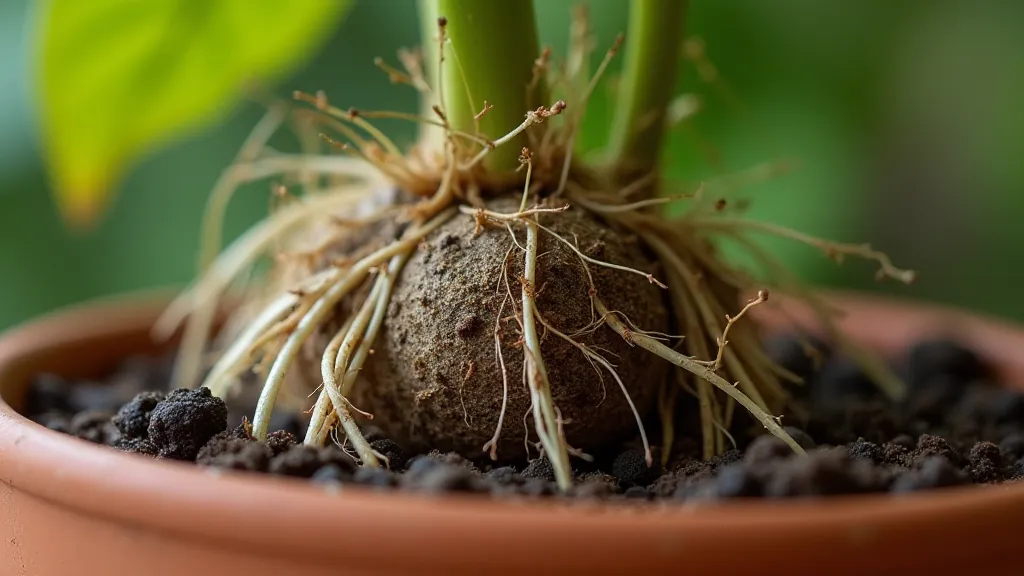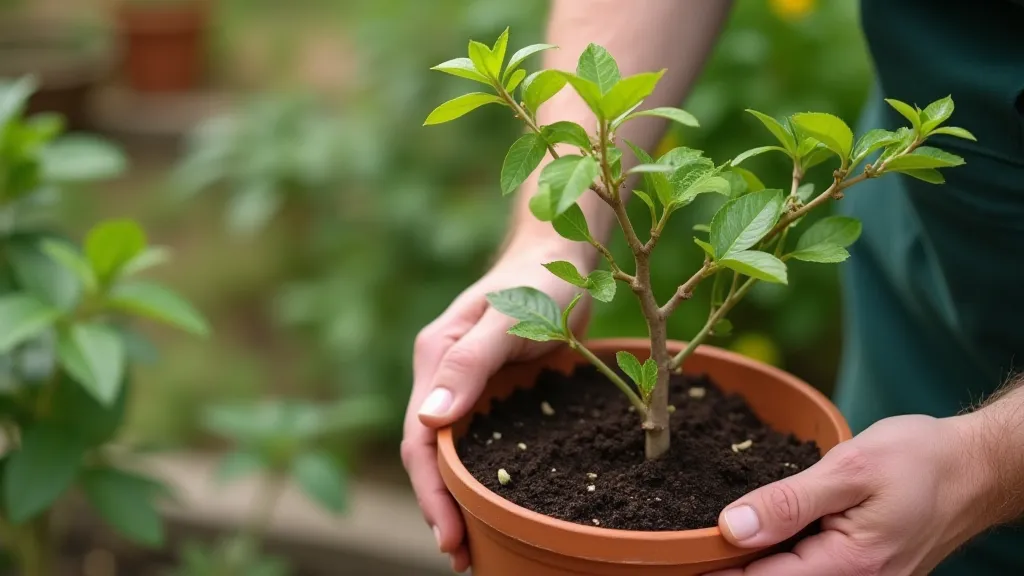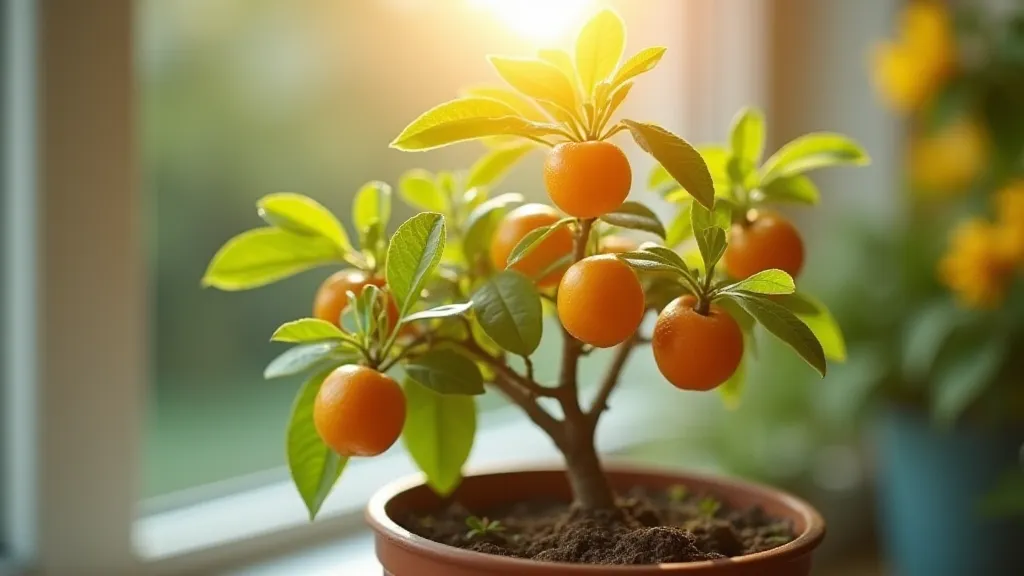Potting & Soil Mix for Thriving Dwarf Citrus
Growing dwarf citrus trees indoors can be incredibly rewarding, providing you with fragrant blossoms and delicious homegrown fruit. However, success hinges on several factors, and one of the most crucial is providing the right environment for their roots – starting with the potting mix and container. This guide will delve into the importance of proper drainage and nutrients, and provide a detailed look at selecting the right pot size, crafting a beneficial soil mix, and mastering the repotting process for your miniature citrus wonders.
Why is Potting Mix and Drainage So Important?
Unlike plants adapted to native soils, dwarf citrus trees in containers are completely dependent on you for their nutritional needs and root health. A poorly chosen potting mix can lead to a host of problems including root rot, nutrient deficiencies, and stunted growth. Citrus roots are particularly susceptible to root rot due to their preference for consistently moist (but not soggy!) conditions. Good drainage is *essential* to prevent this. Furthermore, the soil needs to provide adequate aeration for healthy root development. Often, a standard potting mix simply isn't enough to achieve this, and understanding the nuances of citrus care is paramount for success. If you’re encountering issues, it might be beneficial to review other common problems impacting dwarf citrus trees.

Choosing the Right Pot Size
Starting with the right pot is key. Too small, and your tree will quickly become root-bound, restricting growth and nutrient uptake. Too large, and the excess soil can retain too much moisture, leading to root rot. Finding the right balance is essential for long-term health and productivity. It’s also important to consider the impact of lighting; inadequate light can exacerbate the effects of an incorrect pot size. You can find more information on lighting for indoor citrus to ensure the best conditions for root development.
- Initial Pot Size: When you first acquire a dwarf citrus tree, it likely comes in a nursery pot. A pot that’s 1-2 inches larger in diameter is generally a good start.
- Growth Rate & Repotting: As your tree grows, you'll need to increase the pot size gradually. Repot every 2-3 years, or when you notice roots circling the inside of the pot. The act of repotting itself is important; a poorly executed repotting can stress the tree and affect its overall health.
- Material Matters: Terracotta pots are excellent for citrus because they are porous and allow for better aeration. Plastic pots are also suitable, but ensure they have ample drainage holes. The material of your pot also indirectly affects the light it reflects onto the plant, potentially contributing to its growth.
Crafting the Perfect Soil Mix
A standard potting mix often isn't enough for citrus. You need a mix that drains quickly and provides the necessary nutrients. Here's a recipe you can adapt:
- Coco Coir: (50%) Provides excellent aeration and water retention without compacting. Coco coir is a fantastic alternative to peat moss, offering improved drainage and sustainability.
- Perlite: (25%) Improves drainage and aeration. Look for a coarse grade perlite for maximum effectiveness.
- Compost: (20%) Provides essential nutrients and beneficial microbes. (use well-rotted compost!). Compost is a vital ingredient, enriching the soil with organic matter and beneficial microorganisms.
- Horticultural Sand: (5%) Aids drainage – use coarse horticultural sand, not play sand. Horticultural sand provides essential drainage.
Alternatively, you can use a commercially prepared citrus potting mix, but always check the ingredients to ensure it's well-draining. When troubleshooting issues with your citrus tree, remember that the soil mix plays a significant role. While repotting, consider if the soil itself is contributing to the problem. You can also refer to resources dedicated to troubleshooting common dwarf citrus problems for a more comprehensive approach to identifying and addressing potential issues.
The Repotting Process: A Step-by-Step Guide
Repotting shouldn't be a stressful experience for your tree. Follow these steps carefully:
- Timing: The best time to repot is in the spring, just before new growth begins. This allows the tree to establish itself comfortably before the demands of the growing season.
- Prepare the New Pot: Choose a pot that’s 2-4 inches larger than the current pot. Add a layer of the prepared soil mix at the bottom. Ensure the new pot has adequate drainage holes to prevent waterlogging.
- Remove the Tree: Gently tip the old pot and loosen the root ball. If the tree is very root-bound, carefully tease apart the roots. Root pruning may be necessary to encourage outward growth.
- Inspect the Roots: This is a perfect opportunity to check for signs of root rot (dark, mushy roots). Remove any diseased roots. Early detection is key to preventing further spread.
- Position and Fill: Place the tree in the new pot and add the soil mix, filling the pot to about an inch below the rim. Ensure the top of the root ball is level with the rim of the pot.
- Water Thoroughly: Water the newly repotted tree thoroughly to settle the soil. This helps to eliminate air pockets and ensures even moisture distribution.
- Post-Repotting Care: Keep the tree in a sheltered location for a few weeks, avoiding direct sunlight and drafts. This allows the tree to recover from the stress of transplanting.

Troubleshooting Common Issues
Even with the best care, issues can arise. Understanding these problems and knowing how to address them is crucial for long-term success. Remember that the pruning dwarf citrus trees is essential for their overall health and shape.
- Root Rot: If you suspect root rot, reduce watering and ensure excellent drainage. Consider repotting into fresh, well-draining soil. Early intervention is crucial for saving a root-bound tree.
- Nutrient Deficiencies: Yellowing leaves can be a sign of nutrient deficiencies. Fertilize regularly during the growing season with a citrus-specific fertilizer. Always follow package instructions carefully to avoid over-fertilization.
- Stunted Growth: Root-bound trees or nutrient deficiencies can stunt growth. Repot if necessary and ensure adequate fertilization. Also, consider the amount of light the tree is receiving.
- Leaf Drop: Sudden leaf drop can be caused by a variety of factors, including changes in temperature, humidity, or watering habits. Maintaining consistent conditions is key.
- Pest Infestations: Keep an eye out for common pests like aphids, scale, and spider mites. Treat infestations promptly with appropriate insecticides.

The lighting conditions are paramount for healthy growth; inadequate light can impact fruit production and overall vitality. Optimizing the amount of light your dwarf citrus tree receives is critical. A lack of sufficient light can make the tree more vulnerable to pests and diseases. Achieving the correct lighting conditions is integral to a healthy and productive tree.
By following these guidelines, you're well on your way to providing a thriving environment for your dwarf citrus trees, ensuring they flourish indoors and reward you with fragrant blossoms and delicious fruit for years to come. Remember that consistent care and attention to detail are essential for success. Happy growing!





